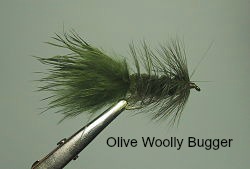To understand how to fly fish with a dragonfly nymph we need first to understand its life on the bottom and its mannerisms. Knowing this will help you know where to put your fly and how to retrieve it.
Shop Our Essential Fly BoxesWhat are Dragonfly Nymphs?
Most of us have seen dragonfly adults flying around but know little about their lifecycle.
The adults are very good at flying. They can fly up to thirty miles an hour, stop fast and even fly backwards.
With these skills they are rarely available to trout so we won’t concern ourselves with them here.
The nymph on the other hand needs to be understood by the fly fisher. Dragonfly nymphs are found in most all western lakes, ponds and the still waters of rivers, and provide a big juicy meal for trout.
Ponds and lakes with a good dragonfly population will often grow some large trout. If you fly fish these areas you need to have a dragonfly nymph or six in your fly box.
The Life and Ways of a Dragonfly
There are only three stages to a dragonfly: egg, nymph and the adult (there is no pupal stage). Adult dragonflies can be easily identified because their wings are held out to the side when at rest while the damselfly holds its wings back over its body when at rest.
Dragonfly nymphs are between one and two inches long and will hide amid the bottom silt and vegetation. With some of the silt and debris attached to their bodies they are often the same color as the lake bottom.
Others will hide on twigs or branches in the water waiting for lunch to drift by. They eat mayfly nymphs, water beetles, leeches, mosquito larvae, other small insects and even small trout fry.
Dragonflies will stay in the nymph stage from three to five years. This means that even after some of the nymphs have emerged, there are others still very active on the lake bottom.
Trout remain on the lookout for these year round.
A dragonfly nymph breathes by using gills inside its abdomen. Water is drawn in and expelled out like we do with our lungs. The difference is they do this through their anus. Yes, they breathe through their butts. This is also how they swim.
When they do swim they swim in short four- or five-inch bursts along the bottom. A fast jet of water is shot out the back.
These short bursts are understandable considering the method used wouldn’t you say?
Dragonfly Emergers
When emerging, most nymphs crawl along the bottom or swim close to the bottom as they head for shore. They emerge when the water starts to warm, usually from late May to mid-July. Some will also emerge as late as August or September.
Dragonflies do not emerge in open water. They head for shore, weed beds or anything that protrudes above the water. There they wait for nighttime before leaving the water. One possible reason for this nighttime migration is that the hatching process takes up to several hours. If this happened during the day the population would soon fall victim to the birds.
Dragonfly Nymph Fly Fishing Tips
So what does all this tell you about how you should fish a dragonfly nymph for trout?
- Since the dragonfly nymph relies on camouflage you need to use a color similar to the lake or pond bottom. Have olives, browns and greens in your fly box.
- Fish your nymph deep near the bottom and near weed beds.

- Try a Woolly Bugger with the back half of the tail cut off. This will give it an hourglass shape, which will match the natural nymphs. Remember to keep the overall length from one to two inches. Or try the Lake Dragon or the Carey Special in the same sizes.
- Use a size 6 down to a size 10 when imitating a dragonfly nymph. This is a good range to start with when fly fishing for trout.
- With most trout feeding within eight feet of the surface and near shore, a floating line with a sink tip should work fine. You can use a full sinking line but you really don’t need to make the purchase at this point.
- Cast out from the bank (remember the naturals are headed for shore), wait for it to sink near the bottom then retrieve in short four- to six-inch bursts toward shore using a slow hand twist retrieve (remember their anus propulsion method).
- If this fails to bring a strike, speed up the retrieve but keep them short. Vary the pause between pulls.
- Remember that the natural nymph will pause, crawl and try to escape known predators with fast bursts.
